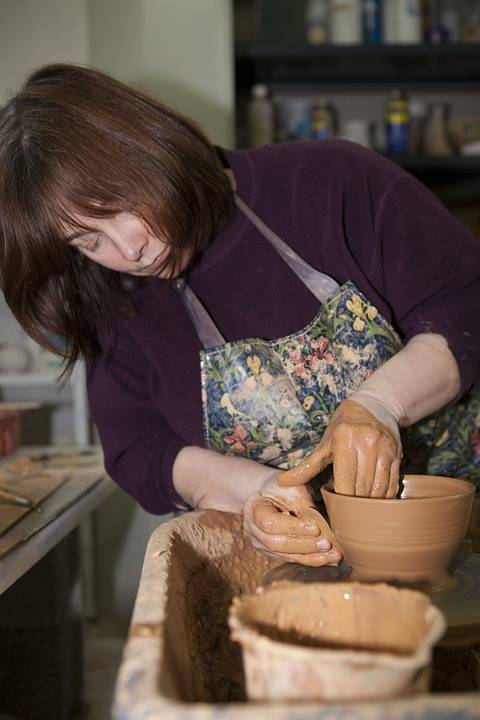Long coveted by job centres and PowerPoint presenters, the old image of moving up the career ladder makes less and less sense by the day. In France and other Western societies, it is increasingly common to see interior designers become bakers, ex-bankers opening up cheese shops, and marketing officers taking up electricians’ tools.

In January 2022, 21% of French working people were in the course of changing career, while 26% were reported to be considering a career switch in the long term. As part of this trend, executives or the highly educated are increasingly drawn to the world of craft. The practice is sometimes referred to as downshifting in English, which, according to the Cambridge Dictionary, is “the practice of leaving a job that is well paid and difficult in order to do something that gives you more time and satisfaction but less money”.
These career changes are a puzzle for sociologists, who have traditionally sought to understand the factors driving upward mobility, class reproduction, or social downgrading. These days, the latter can be observed on an intergenerational scale, with children increasingly occupying lower positions in the social hierarchy than their parents’, but also on an intragenerational scale, with individuals carrying out jobs for which they are overqualified. In both cases, the phenomenon at play is thought of as something people are subject to, not the result of their own decision. How, then, can we get our heads around managers moving into the craft industry?
For individuals who have scaled the career ladder or who are highly educated, switching to a “manual” craft trade could indeed be understood as a paradoxical “voluntary downgrading”. As part of my PhD, I therefore embarked onto a mission to understand downshifters’ motivations, interviewing 55 of them.
A specific relationship to work
The first takeaway to emerge from these interviews is the majority of career switchers show a relationship to work which we can describe as “experiential”. This means that, more than material resources or the prestige of professional status, these professionals prioritise satisfying and fulfilling work life.
The economic dimension, while not totally omitted, was all the more easily overlooked because our interviewees often had safety nets. For some, this means unemployment benefits for the time needed to retrain, income from a spouse; for others financial assistance from relatives, prior savings or even property assets.
In this regard, Tom (first names have been changed), who has a PhD in physics and works as a carpenter, confirmed to me that having “the cultural and economic capital” and the security of knowing that “his parents [who are both academics] are there” are the conditions that allow him to “wander from one job to another”.
Thanks to their degrees or past professional experience, these professionals also know they can return to a more qualified job if things don’t pan out the way they would like. Under these conditions, career switchers, who are after a job that is more in line with their values, can allow themselves to transgress socio-professional boundaries.
Admittedly, the craft trade corresponds to a more working-class job sector than the one their initial background had accustomed them to. It requires a lower education level than theirs, and generally confers lower or more irregular income. But the experiential relationship with work leads the career switchers to focus less on these criteria than on the satisfaction that their new job can intrinsically provide. They therefore only rarely told me that they felt downgraded, assessing their situation more on an individual level and in terms of fulfilment than in terms of the socio-professional status associated with their new job.
Giving meaning to one’s job
This experiential relationship to work often leads career switchers to indicate that craft work would have more “meaning” than their former profession. Gabriel, a former account manager who now works as a cheesemonger, sums up what led him to consider that his job “lacked meaning”:
“Every day is a bit the same […] and you say to yourself, ‘Well, am I really going to spend 40 years at a desk, with my arse on a chair staring at a computer? Is this really what I want to do?’”
Not all of the people who retrained were necessarily working in a computer-based “office” job. But this type of activity is nonetheless repulsive, which structures their relationship with “intellectual” work. Several shortcomings are attributed to it: first, the sedentary nature of the work, both in terms of being indoors and sitting time. Second, the feeling of unproductivity that “intellectual” work sometimes brings is often mentioned. Finally, such “office jobs” often involve a strong division of labour, which can make people feel like a “number”, a “link” or a “cog in a mechanism”.
In contrast, craftsmanship is given qualities that mirror these shortcomings. First of all, it allows people to work outside – which many people who have retrained in construction value – and to exercise their bodies. In contrast to studies highlighting the physical vulnerability associated with craft work, career switchers tend to describe this bodily engagement as something that “feels good”, strengthens “muscles”, makes you feel “fit” and “good in your body”, or that helps avoid “getting fat”.
Second, craftsmanship is valued for its “concrete” character. By this we mean that the product of the activity is palpable, tangible, which makes it easier to equate the efforts engaged with the result they produce. This concrete aspect contrasts with feelings associated with the former job, of losing oneself in “endless meetings”, in “frills”, in reflections that can last “ hours and hours” on subjects which interviewees criticise as “superficial”, “artificial”, “abstract” or “excessively complex”.
Joëlle, a training manager who became a baker, underlined that she had the impression of “finishing late […] to do nothing”. She contrasts this activity where, at the end of the month, she had “still earned 5,500 euros”, but without knowing “who she was benefiting”, and her new job: “There, every day I feed at least a hundred people”.
Finally, the craft activity often allows retrained workers to supervise all stages of production, which is valued as opposed to an overly marked division of labour. The challenge lies in the possibility of benefiting from greater autonomy, both technical (mastering all the tasks necessary to produce the product) and organisational (not depending on others to carry out one’s activity).
This concern for professional autonomy can be seen in the very high proportion of career switchers who become self-employed in the very short term, compared to those in the trade. From this point of view, access to independence emerges as an essential condition for retraining in the craft trade.
The article first appeared in The Conversation.











